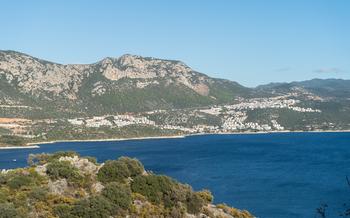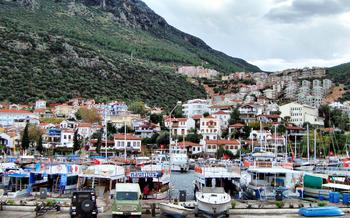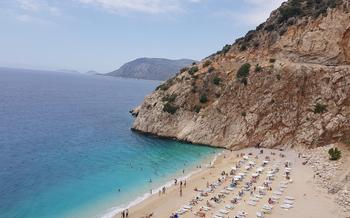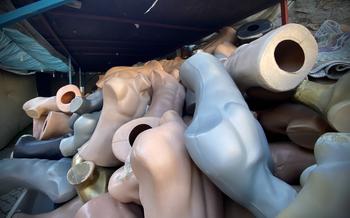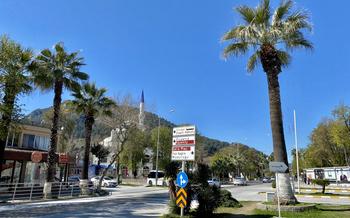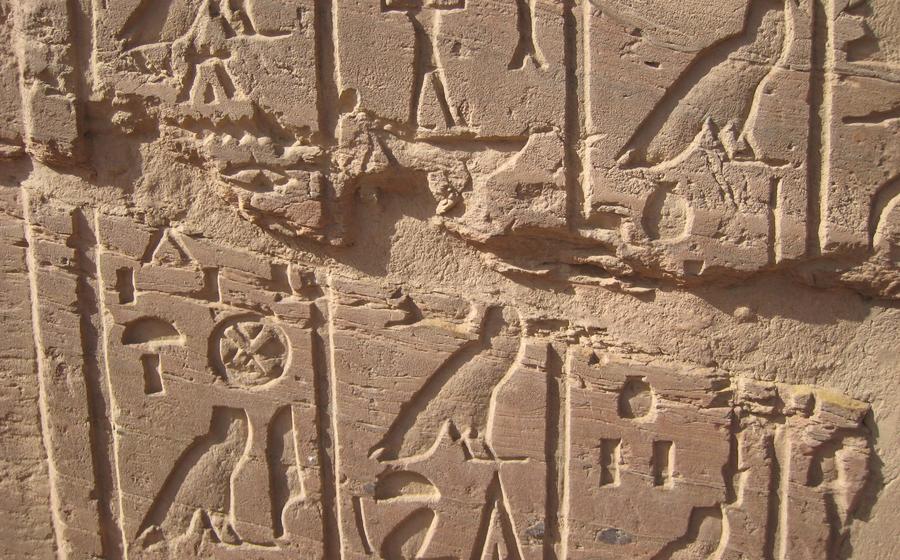
Lions Tomb
- Unveiling Kaş's Hidden Gem: The Lions Tomb
- A Journey Through Time: The History of the Lions Tomb
- Exploring the Architectural Masterpiece: The Lions Tomb's Design
- Locating the Lions Tomb: A Guide for Visitors
- Preserving the Past: Conservation Efforts at the Lions Tomb
- Lions in Lycian Culture: Symbolism and Significance
- Lycian Funerary Practices: A Window into the Past
- Excavations and Discoveries: Unraveling the Tomb's Secrets
- Visiting the Lions Tomb: A Practical Guide
- Transportation Options to Reach the Lions Tomb
- Nearby Attractions to Enhance Your Visit
- Accommodation Options for a Comfortable Stay
- Safety Tips for a Worry-Free Visit
- Insider Tip: Unveiling the Hidden Chamber
Unveiling Kaş's Hidden Gem: The Lions Tomb
Nestled amidst the serene landscapes of Kaş, Turkey, lies a captivating historical treasure that beckons travelers to embark on a journey through time – the Lions Tomb. This ancient Lycian mausoleum, adorned with majestic lion sculptures and intricate carvings, stands as a testament to the region's rich cultural heritage. Its historical significance, architectural details, and current state of preservation make it a must-visit destination for history buffs, architecture enthusiasts, and anyone seeking an immersive cultural experience.
Historical Significance
The Lions Tomb, dating back to the 4th century BC, is a remarkable example of Lycian funerary architecture. The Lycians, an ancient civilization that inhabited the region of Lycia in southwestern Turkey, were renowned for their elaborate rock-cut tombs, each showcasing unique artistic and architectural elements. The Lions Tomb, with its striking façade featuring two imposing lion sculptures, is one of the most well-preserved and impressive examples of Lycian craftsmanship.
Architectural Details
The Lions Tomb, carved into the rocky hillside, boasts a distinctive façade adorned with two life-sized lion sculptures, symbolizing strength, courage, and nobility. The lions, intricately carved with realistic details, appear to guard the entrance to the tomb, creating a sense of awe and reverence. Above the lions, a pediment features intricate carvings depicting a battle scene, offering a glimpse into the Lycian warrior culture.
Location and Accessibility
The Lions Tomb is situated on the outskirts of Kaş, a picturesque coastal town in the Antalya province of Turkey. It is easily accessible by foot, car, or taxi from the town center. The tomb is located within a small park, providing visitors with ample space to admire its grandeur and capture stunning photographs.
Current State and Preservation Efforts
Despite its age, the Lions Tomb remains in relatively good condition, thanks to ongoing restoration and conservation efforts. The tomb's façade, carvings, and sculptures have been carefully preserved, ensuring that its intricate details continue to captivate visitors. However, the tomb's interior chamber, which was once accessible, is currently closed due to safety concerns.
A Journey Through Time: The History of the Lions Tomb
The Lions Tomb stands as a testament to the ancient Lycian civilization, a seafaring people who inhabited the region from the 5th century BC to the 1st century AD. The Lycians were known for their advanced culture, which was heavily influenced by Greek and Persian traditions. They developed a unique style of architecture, art, and religion, and their tombs are considered among the most impressive examples of their craftsmanship.
The Lions Tomb is believed to date back to the 4th century BC and was likely built as the final resting place for an important Lycian leader or dignitary. The tomb's most striking feature is its façade, which is adorned with two majestic lion sculptures. These lions are believed to represent the guardians of the tomb, symbolizing strength, courage, and nobility. They also reflect the Lycians' deep connection to the natural world, as lions were revered as powerful animals in their culture.
The Lions Tomb also holds significance in terms of Lycian funerary practices. The Lycians believed in an afterlife, and their tombs were designed to provide a comfortable and well-appointed resting place for the deceased. The tomb's interior consists of a chamber tomb, which was likely used for the burial of the deceased along with their personal belongings and offerings.
Archaeological excavations at the Lions Tomb have uncovered a wealth of artifacts and inscriptions, providing valuable insights into the lives and customs of the ancient Lycians. These discoveries have helped to shed light on their funerary practices, religious beliefs, and artistic traditions. Ongoing research and excavations continue to reveal new information about this fascinating ancient civilization.
Exploring the Architectural Masterpiece: The Lions Tomb's Design
The Lions Tomb in Kaş stands as a testament to the Lycian civilization's architectural prowess. Its striking façade features two majestic lion sculptures, meticulously carved out of stone and positioned symmetrically on either side of the entrance. These lions, symbols of strength and guardianship, seem to keep an eternal vigil over the tomb, embodying the Lycian belief in the afterlife.
Intricate carvings and motifs adorn the tomb's exterior, showcasing the Lycians' exceptional craftsmanship. Floral patterns, geometric designs, and mythical creatures intertwine harmoniously, creating a captivating visual tapestry. The tomb's entrance, framed by a finely chiseled architrave, beckons visitors to step into the realm of the ancient Lycians and discover their fascinating funerary traditions.
The Lions Tomb's interior reveals a chamber tomb structure, common among Lycian tombs. This main chamber, where the deceased was laid to rest, is spacious and well-preserved, hinting at the importance of the person entombed within. Niches and ledges carved into the walls may have once held funerary offerings or personal belongings of the deceased, providing glimpses into their earthly life.
When compared to other Lycian tombs, the Lions Tomb stands out for its unique façade and intricate carvings. While other tombs often feature simpler designs or different symbolic motifs, the Lions Tomb's distinctive lion sculptures and elaborate ornamentation set it apart as a masterpiece of Lycian architecture, capturing the essence of this ancient civilization's artistic and cultural achievements.
Locating the Lions Tomb: A Guide for Visitors
To reach the Lions Tomb, embark on a scenic stroll from the center of Kaş, following the signs that guide you towards the ancient Lycian site. The tomb is situated on a hill overlooking the town, offering breathtaking panoramic views of the Mediterranean Sea. As you approach the tomb, you will be greeted by its impressive façade adorned with majestic lion sculptures.
For those arriving by car, ample parking space is available near the tomb, ensuring a convenient visit. The tomb's proximity to other attractions in Kaş makes it an ideal starting point for exploring the town's rich history and natural beauty.
To capture the best perspectives of the Lions Tomb, venture to the viewing platform located adjacent to the tomb. From this vantage point, you can admire the tomb's grandeur against the backdrop of the azure sea and the surrounding mountains.
The Lions Tomb is accessible to visitors of all abilities. A well-maintained pathway leads to the tomb, ensuring a safe and comfortable visit for everyone.
Preserving the Past: Conservation Efforts at the Lions Tomb
The Lions Tomb, a priceless relic of Lycian history, faces the relentless test of time and the elements, necessitating ongoing conservation efforts to safeguard its legacy. The tomb's exposed location and intricate carvings make it vulnerable to erosion, weathering, and vandalism. Recognizing the urgency, local authorities and international organizations have collaborated on comprehensive restoration projects.
Archaeologists and conservators meticulously clean and document the tomb's surfaces, removing harmful deposits and vegetation without compromising its authenticity. Specialized techniques are employed to stabilize and reinforce the tomb's structure, ensuring its resilience against natural disasters and human impact.
The surrounding landscape is carefully managed to prevent erosion and maintain a harmonious environment. Native plants and trees are introduced to create a buffer zone, minimizing the tomb's exposure to harsh winds and temperature fluctuations.
As custodians of history, visitors play a crucial role in preserving the Lions Tomb. By adhering to designated pathways, refraining from touching or climbing on the tomb, and reporting any signs of damage or vandalism, they become active participants in its conservation.
Preserving the Lions Tomb is not merely about protecting a monument but also about honoring the legacy of the Lycian civilization. By safeguarding this architectural masterpiece, we ensure that future generations can continue to marvel at its beauty, unravel its secrets, and connect with the rich history it embodies.
Lions in Lycian Culture: Symbolism and Significance
In Lycian culture, lions held a profound significance, embodying strength, courage, and nobility. They were revered as guardians and protectors, often depicted in art and architecture as symbols of power and authority. The Lions Tomb exemplifies this reverence, showcasing the lion's role as a guardian of the deceased.
The Lycians believed that lions possessed supernatural abilities, capable of warding off evil spirits and ensuring a safe passage into the afterlife. This belief is reflected in the placement of lion sculptures at the entrance of tombs, where they served as guardians of the deceased's soul.
The lion's association with strength and courage is evident in Lycian mythology, where lions are often depicted as companions or allies of heroes and gods. Their presence in art and architecture conveys a sense of power and majesty, as seen in the impressive lion sculptures adorning the Lions Tomb.
Interestingly, the Lycians were not the only ancient civilization to revere lions. In many other cultures, such as ancient Egypt, Greece, and Rome, lions were similarly associated with strength, courage, and divine power. This cross-cultural symbolism highlights the universal appeal and significance of the lion as a symbol of strength and majesty.
Lycian Funerary Practices: A Window into the Past
The Lycians held burial rituals in high esteem, believing that the afterlife was a continuation of life on earth. They constructed elaborate tombs, such as the Lions Tomb, to honor the deceased and ensure their comfortable passage into the next realm.
Lycian tombs varied in type and size, ranging from simple rock-cut chambers to grand structures like the Lions Tomb. Each tomb's design and features reflected the social status and wealth of the deceased. The Lycians believed in a multi-layered afterlife, and their tombs often contained multiple chambers to accommodate the various stages of the soul's journey.
Grave goods were placed within the tombs to accompany the deceased in the afterlife. These goods included personal belongings, jewelry, tools, and even food and drink. The Lycians believed that these items would be necessary for the deceased to continue their existence in the next world.
Lycian funerary practices provide valuable insights into their beliefs and values. Their tombs are not only architectural marvels but also windows into the rich cultural heritage of this ancient civilization.
Excavations and Discoveries: Unraveling the Tomb's Secrets
Archaeological excavations at the Lions Tomb have shed light on the rich history and customs of the ancient Lycians. Conducted by teams of archaeologists and historians, these excavations have uncovered a wealth of artifacts and inscriptions within the tomb, providing valuable insights into the lives and beliefs of this fascinating civilization.
Among the significant discoveries are inscriptions in the Lycian language, offering clues about the tomb's occupants and their social status. These inscriptions have helped scholars decipher the Lycian alphabet and gain a deeper understanding of their written language. Additionally, the excavation team unearthed various artifacts, including pottery, jewelry, and tools, which provide glimpses into the daily life and material culture of the Lycians.
The excavations have also revealed intriguing details about the tomb's construction and design. By carefully examining the tomb's architecture and the surrounding area, archaeologists have gained insights into the engineering techniques and craftsmanship of the Lycians. These discoveries have contributed to our understanding of ancient Lycian architecture and building practices.
Ongoing research and excavations at the Lions Tomb continue to yield new insights into the Lycian civilization. By piecing together the evidence from artifacts, inscriptions, and the tomb's structure, archaeologists are gradually unraveling the secrets of this ancient burial site, providing valuable information about the history and culture of the Lycians.
Visiting the Lions Tomb: A Practical Guide
To fully appreciate the Lions Tomb's grandeur, plan your visit during the shoulder seasons (April-May and September-October) when the weather is pleasant, and crowds are smaller. Allocate at least an hour to explore the tomb, taking your time to admire its intricate carvings and soak in its historical significance.
Photography enthusiasts will find the Lions Tomb a treasure trove of captivating shots. The golden hues of the tomb against the azure sky create a striking contrast, perfect for capturing the essence of this ancient marvel. Remember to be respectful when taking photos, ensuring you don't disturb other visitors or damage the tomb.
As you explore the Lions Tomb, remember that it is a historical site that deserves our respect and care. Avoid touching or climbing on the tomb, as this can cause damage to its delicate structures. By being mindful of your actions, you contribute to preserving this priceless heritage for future generations to admire.
Transportation Options to Reach the Lions Tomb
To reach the Lions Tomb from Kaş, you have several transportation options at your disposal. For those without their own vehicle, public transportation is a convenient and affordable choice. Buses depart from the Kaş Otogar (bus station) regularly and will take you to the small village of Çukurbağ, located just a short walk from the tomb. The journey takes approximately 15-20 minutes, and tickets can be purchased directly from the bus driver.
If you prefer a more flexible option, taxis are readily available in Kaş. While they offer convenience and comfort, taxis can be more expensive than public transportation. Agree on a fare with the driver before embarking on your journey to avoid any surprises.
For those who enjoy the freedom of exploring at their own pace, renting a car is an excellent option. Several car rental agencies operate in Kaş, offering a range of vehicles to suit your needs and budget. With a rental car, you can easily visit the Lions Tomb and other nearby attractions at your leisure, without being restricted by public transportation schedules.
When choosing your mode of transportation, consider your budget, the number of people in your group, and your desired level of flexibility. No matter which option you select, getting to the Lions Tomb is a breeze, allowing you to embark on a journey through history and marvel at this ancient Lycian masterpiece.
Nearby Attractions to Enhance Your Visit
The Lions Tomb is not the only gem in Kaş. The town is surrounded by a wealth of historical and natural attractions that will make your visit even more enriching.
Stroll a few steps further, and you'll find the ancient theater of Antiphellos, a well-preserved amphitheater that once hosted performances for the city's residents. Take a seat and imagine the atmosphere of a lively show in ancient times.
For a vibrant and lively ambiance, head to Kaş Marina. This picturesque harbor is lined with charming restaurants, cafes, and shops. Watch the colorful boats bobbing on the water, or embark on a boat tour to explore the stunning coastline and nearby islands.
If you seek a refreshing dip in crystal-clear waters, Kaputaş Beach is a must-visit. Located a short drive from Kaş, this stunning beach boasts white sand, turquoise waters, and dramatic cliffs. Relax on the sun-kissed shore, swim in the refreshing sea, or simply soak in the breathtaking views.
For an underwater adventure, venture to the Kekova Sunken City. This ancient city, partially submerged beneath the Mediterranean Sea, offers a unique opportunity to explore sunken ruins, including buildings, streets, and even a harbor. Snorkeling and diving enthusiasts can marvel at the underwater wonders and discover the secrets of this lost city.
Accommodation Options for a Comfortable Stay
Kaş offers a wide range of accommodation options to suit every budget and preference. From cozy guesthouses to luxurious hotels, there's something for every traveler. For those seeking a budget-friendly option, there are several hostels and guesthouses within walking distance of the town center. Mid-range hotels offer a comfortable stay with amenities like private bathrooms and air conditioning. If you're looking for a touch of luxury, splurge on a stay at one of the upscale hotels along the waterfront, where you can enjoy stunning views of the Mediterranean Sea.
When choosing a hotel, consider your budget, desired amenities, and location. If you want to be close to the Lions Tomb and other attractions, opt for a hotel in the town center. For a more peaceful and secluded stay, choose a hotel on the outskirts of town.
Here are some recommended hotels in Kaş:
- Budget:
- Kekova Hostel: A cozy hostel with a friendly atmosphere and comfortable dorms.
- Kaş Yurdu: A family-run guesthouse with basic rooms and a shared kitchen.
- Mid-range:
- Hotel Villa Mahal: A charming hotel with a rooftop terrace and panoramic sea views.
- Hotel Lykia: A modern hotel with a swimming pool and a spa.
- Luxury:
- Hotel Patara Prince: A luxurious hotel with a private beach, multiple swimming pools, and a variety of dining options.
- Hotel Villa Mahal: A boutique hotel with stunning views of the Mediterranean Sea and personalized service.
Safety Tips for a Worry-Free Visit
Kaş is generally a safe destination, but it's always advisable to take precautions to ensure a hassle-free trip. Be wary of common tourist scams, such as overpriced souvenirs or fake tours. Always ask for official prices and check reviews before engaging with any services. Respect local customs and traditions, especially when visiting religious sites or interacting with the local community. Learn a few basic Turkish phrases to show respect and facilitate communication. Keep emergency contact information handy, including the local police station and your embassy or consulate. By following these simple tips, you can fully immerse yourself in the wonders of Kaş without any worries.
Insider Tip: Unveiling the Hidden Chamber
Beyond the visible grandeur of the Lions Tomb lies a secret chamber, concealed from the casual observer. This hidden sanctuary, steeped in historical significance, is believed to have served as a sacred space for ancient Lycian rituals and ceremonies. Theories abound regarding its purpose, with some suggesting it was a treasury or a place of refuge during times of conflict.
To access this hidden chamber, one must venture off the beaten path, following a discreet trail that leads to a concealed entrance. The chamber itself is a marvel to behold, with intricate carvings and inscriptions adorning its walls. It is a place of profound mystery and intrigue, inviting visitors to step back in time and imagine the secrets it holds.
While the existence of this hidden chamber is not widely known, it is a testament to the rich history and cultural heritage of the Lions Tomb. Discovering it is a unique and rewarding experience, allowing visitors to connect with the past in a truly immersive way.
However, it is crucial to respect the sanctity of this hidden chamber and preserve its secrecy for future generations. Visitors are advised to tread lightly, refrain from disturbing the delicate carvings, and maintain the integrity of this sacred space.


